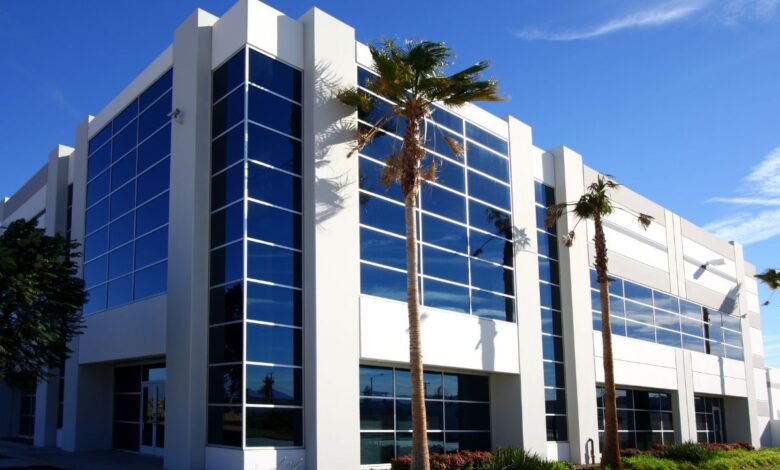When Are the Fire Sprinklers Required in Commercial Buildings in Texas

As a business owner or property manager, ensuring the safety of your employees and tenants is a top priority. When it comes to fire safety, installing proper fire sprinkler systems is essential in any commercial building. Not only are they required by law in most states, but they can also save lives and prevent extensive damage to your property.
However, as with many regulations, understanding when strictly fire sprinklers are required can be confusing and overwhelming. Fire safety is crucial to design and construction, especially in commercial buildings. As responsible citizens, we must be aware of the fire safety regulations that govern these structures and ensure our safety and that of others.
I will dive into the specific requirements for commercial buildings in Texas and provide you with all the information you need to ensure your property is up to code and equipped with adequate fire protection measures.
When Is An Automatic Fire Sprinkler Required For Commercial Buildings?
The requirements for installing these systems vary based on several factors, including building size, occupancy type, and local regulations. Here’s a comprehensive overview of when an automatic fire sprinkler system is required for commercial drywall takeoff services:
Building Height:
Commercial buildings over 55 feet tall must have automatic sprinkler systems. This requirement aims to enhance fire safety in taller buildings where evacuation may be more challenging.
Fire Area Size:
For newly built commercial buildings, if the fire area exceeds 5,000 square feet, the installation of a fire sprinkler system is mandated. A “fire area” refers to the total floor area of a building or portion thereof where a fire could occur, separated from other spaces by fire-resistance-rated walls and floors.
Specific Requirements by NFPA:
The National Fire Protection Association (NFPA) outlines specific guidelines for fire sprinkler installations. For instance, sprinkler systems must be designed to meet NFPA 13-R standards, covering areas such as garages, balconies, and breezeways. These standards ensure sprinkler systems are adequately designed to protect various building parts.
Occupancy Classification and Allowable Areas:
Sprinkler systems are required when the floor areas of a building exceed the permitted allowable areas for a non-sprinklered building based on its occupancy classification. Different types of occupancies, such as residential, commercial, or industrial, have varying requirements for fire safety measures.
Percentage of Operational Floors:
Some regulations state that if 50% or more of all floors in a building feature operational sprinklers, the system is deemed necessary. The entire building must be equipped with a sprinkler system by specific deadlines.
Inspection Recommendations:
In Northern California, for example, it is recommended that buildings undergo five-year inspections for sprinklers, pipes, fittings, hangers, and seismic bracing in concealed spaces. Regular inspections ensure the sprinkler systems remain functional and compliant with safety standards.
Understanding the specific requirements for fire sprinkler systems in commercial buildings is crucial for ensuring compliance with local and national fire safety standards. Building owners and developers should consult with fire safety experts and review local building codes to determine the exact requirements for their properties.
Choosing the Right System: Types of Fire Sprinklers for Texas Commercial Buildings
Choosing the right fire sprinkler system for your Texas commercial building is a critical decision that impacts the safety of your property, assets, and occupants. Here’s an overview of the types of fire sprinkler systems available and considerations for Texas commercial buildings:
Wet Pipe Systems
Wet pipe systems are the most common type of fire sprinkler system. They consist of pipes filled with water under pressure at all times. When a fire activates a sprinkler head, water is immediately discharged onto the fire. Wet pipe systems are known for their reliability and simplicity but are unsuitable for areas where the pipes could freeze.
Best for: Office buildings, schools, and residential complexes in Texas’s warmer regions.
Dry Pipe Systems
Unlike wet pipe systems, dry pipe systems have pipes filled with pressurized air or nitrogen, which holds the water supply back at a central valve. When a fire activates a sprinkler head, the air is released, and water flows into the piping system and out through the activated sprinklers. These systems are ideal for environments prone to freezing temperatures.
Best for: Unheated warehouses, parking garages, and attic spaces in Texas areas that experience colder weather.
Pre-Action Systems
Pre-action systems are similar to dry pipe systems but with an additional feature: the water is held back by an electronically operated pre-action valve. Water is only released into the pipes when the fire detection system activates, making it ideal for areas where accidental activation could cause significant damage or inconvenience.
Best for: Data centers, libraries, and museums where water damage must be minimized.
Deluge Systems
Deluge systems are used in high-hazard areas where the rapid spread of fire is a concern. These systems do not have individual sprinkler heads that activate independently. Instead, the sprinkler heads are open, and the system is activated by a fire alarm system, causing water to flow from all sprinklers simultaneously.
Best for: Industrial facilities, aircraft hangars, and power plants with high fire load or flammable materials.
Foam Water Sprinkler Systems
These systems mix water with a foam concentrate, especially effective against fires involving flammable liquids. The foam can smother the fire’s surface, preventing oxygen from feeding the fire and cooling the area.
Best for: Chemical plants, refineries, and fuel storage areas.
Conclusion
Fire sprinkler systems are an essential safety feature in commercial buildings installed by the construction company. They not only protect the property and assets within the building, but more importantly, they save lives. While some may argue that the cost of installing a fire sprinkler system is too high for their businesses’ budget, the long-term benefits far outweigh the initial investment. Not only do sprinklers provide peace of mind for employees and customers alike, but they also lower insurance premiums and may even increase property value. As responsible business owners or managers, we must prioritize safety by investing in an automatic fire sprinkler system. Remember, prevention is always better than cure; in this case, it could make all the difference. Take action now and ensure the safety of your commercial building and everyone inside before it’s too late.





